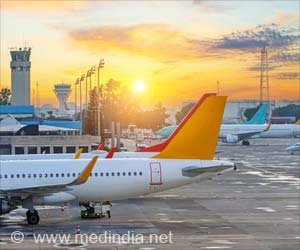Children Near Airports may be Exposed to High Levels of Lead

According to the study, the closer a child resided to the airport, the more likely their blood lead level exceeded California’s state-defined threshold of 4.5 micrograms per deciliter (
).
Following the passage of the Clean Air Act of 1970, the phase-out of tetraethyl lead from automotive gasoline had dramatic impacts on the blood-lead levels of children in the United States, the authors observed.
Advertisement
Lead emissions are affecting children who live in the vicinity of these airports. “Across an ensemble of tests, we find consistent evidence that the blood lead levels of children residing near the airport are pushed upward by the deposition of leaded aviation gasoline,” lead author Sammy Zahran, a professor of economics at Colorado State University, said in a statement.
“This indicates we should support policy efforts to limit aviation lead emissions to safeguard the welfare of at-risk children,” Zahran added.
Distance From Airport and Lead Levels in Children
Researchers analyzed 14,000 blood samples children under six years of age from 2011 through 2020.
For children living a mile or more away from the airport, the authors found that the probability of a blood sample that exceeded the threshold was 21.4 percent lower than for children living within a half-mile of the airport.
Meanwhile, they observed that children who lived East downwind of the airport were 2.18 times more likely to present a blood lead level above this limit.
Lead levels in the blood also increased along with piston-engine aircraft traffic and with the quantities of leaded aviation gasoline being sold at the airport, according to the study.
About 4 million Americans reside within half a mile of an airport that services piston-engine planes, the authors noted, citing data from the Environmental Protection Agency.
About 600 elementary schools are also located near such facilities, the researchers added.
Citing the National Academies of Sciences, Engineering and Medicine, the authors stressed that “lead does not appear to exhibit a minimum concentration in blood below which there are no health effects.”
Lead in Aviation
Researchers explained that leaded gasoline remains a standard aspect of aviation, as the fuel is used by around 170,000 piston-engine aircraft countrywide.
Such aircrafts have one or more piston-powered engine which is a type of reciprocating internal combustion engine. This is connected to a propeller to provide the vehicle with thrust, according to the National Business Aviation Association.
Piston-engine aircraft typically use ‘”low-leaded'” fuel and fly relatively short missions at altitudes below 15,000 feet, per the Washington, D.C.- based trade organization.
While such planes may be low-leaded, the use of lead-formulated aviation gasoline is responsible for up to two-thirds of lead emissions in the U.S. today, according to the study.
Researchers emphasize that there is a compelling need to reduce lead emissions in aviation and improve the wellbeing and life chances of at-risk children.
References :
- Leaded aviation gasoline exposure risk and child blood lead levels – (https:academic.oup.com/pnasnexus/article/2/1/pgac285/6979725)
Source: Medindia
Source link
#Children #Airports #Exposed #High #Levels #Lead



